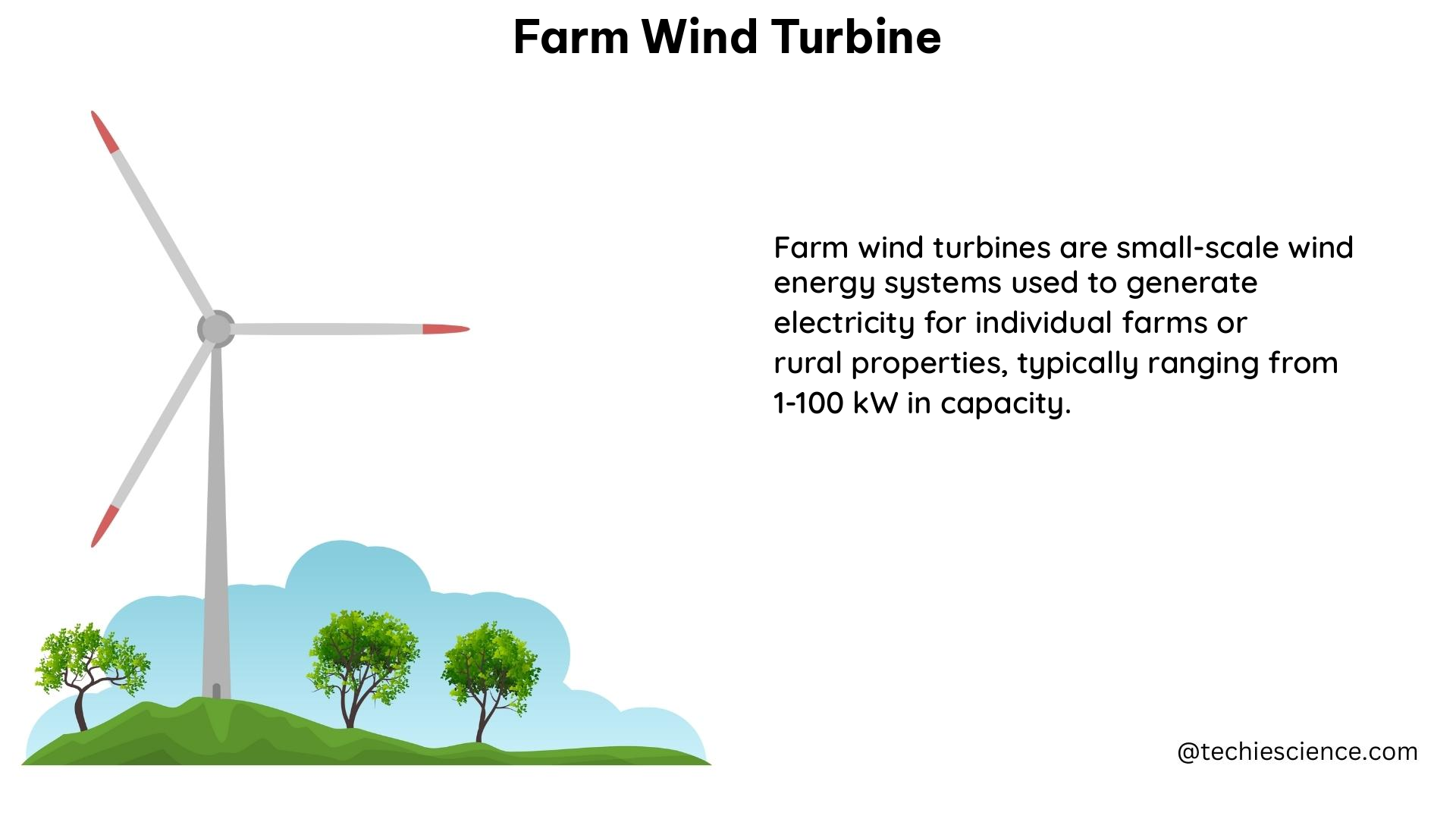Farm wind turbines, also known as distributed wind turbines, are designed for small-scale power generation in agricultural and rural settings. These turbines typically have a capacity of up to 100 kilowatts (kW), although larger models are also available. In this comprehensive guide, we’ll dive deep into the technical specifications and quantifiable data points that make farm wind turbines a viable option for sustainable energy production on your farm or homestead.
Turbine Height and Rotor Diameter
The hub height of farm wind turbines typically ranges from 30 to 50 meters (m), with rotor diameters varying from 15 to 30 m. This allows the turbine to capture wind at higher elevations, where wind speeds are generally higher and more consistent. The total height of the turbine, including the rotor, can reach up to 80 m, depending on the specific model and site conditions.
Rated Power and Energy Yield

The rated power output of farm wind turbines can range from a few kilowatts (kW) to over 100 kW, depending on the size of the turbine and the available wind resource. A typical 50 kW farm wind turbine operating in a windy location can produce around 100,000 to 150,000 kilowatt-hours (kWh) of electricity per year, providing a significant portion of the energy needs for a small farm or community.
Rotor Speed and Wind Speed Operational Range
The rotor speed of farm wind turbines is typically between 20 and 60 revolutions per minute (rpm) at rated power. Some models feature variable speed generators that can operate at higher speeds under certain wind conditions, allowing for more efficient energy capture.
Farm wind turbines are designed to operate at a wide range of wind speeds, from a cut-in speed of around 3-4 meters per second (m/s) to a cut-out speed of 20-25 m/s. This ensures that the turbine can generate power even in relatively low wind conditions, while also protecting the system from damage during high-wind events.
Power Coefficient and Efficiency
The power coefficient (Cp) is a measure of the efficiency of a wind turbine, expressed as a percentage. Farm wind turbines typically have a Cp of around 30-40%, although some advanced models can achieve higher values of up to 45-50%. This efficiency rating is crucial in determining the overall energy output and cost-effectiveness of the system.
Noise Emission and Land Use
Farm wind turbines are generally quieter than their larger, utility-scale counterparts, with noise levels typically ranging from 45 to 55 decibels (dB) at a distance of 300 meters. This makes them more suitable for installation in rural and agricultural areas, where noise pollution is a concern.
In terms of land use, farm wind turbines require a relatively small footprint, typically occupying an area of 0.1 to 0.5 hectares per turbine, depending on the size of the system and the site conditions. This allows for efficient use of available land, while minimizing the impact on agricultural activities and the surrounding environment.
DIY Farm Wind Turbines
For those interested in generating their own power and reducing their reliance on the grid, DIY farm wind turbines offer a viable option. These turbines can be built using a variety of designs, including vertical-axis and horizontal-axis models, depending on the available materials, skills, and resources. While DIY farm wind turbines typically have a lower power output than commercial models, they can still provide a significant portion of the energy needs for a small farm or homestead.
Conclusion
Farm wind turbines are a versatile and efficient solution for small-scale power generation in agricultural and rural settings. By understanding the technical specifications and quantifiable data points outlined in this guide, you can make an informed decision on the best farm wind turbine for your needs and maximize the benefits of this renewable energy technology on your farm or homestead.
References:
- National Renewable Energy Laboratory: Small and Medium Wind Turbines
- U.S. Department of Energy: Distributed Wind Energy
- Windustry: Farm Wind Energy

The lambdageeks.com Core SME Team is a group of experienced subject matter experts from diverse scientific and technical fields including Physics, Chemistry, Technology,Electronics & Electrical Engineering, Automotive, Mechanical Engineering. Our team collaborates to create high-quality, well-researched articles on a wide range of science and technology topics for the lambdageeks.com website.
All Our Senior SME are having more than 7 Years of experience in the respective fields . They are either Working Industry Professionals or assocaited With different Universities. Refer Our Authors Page to get to know About our Core SMEs.